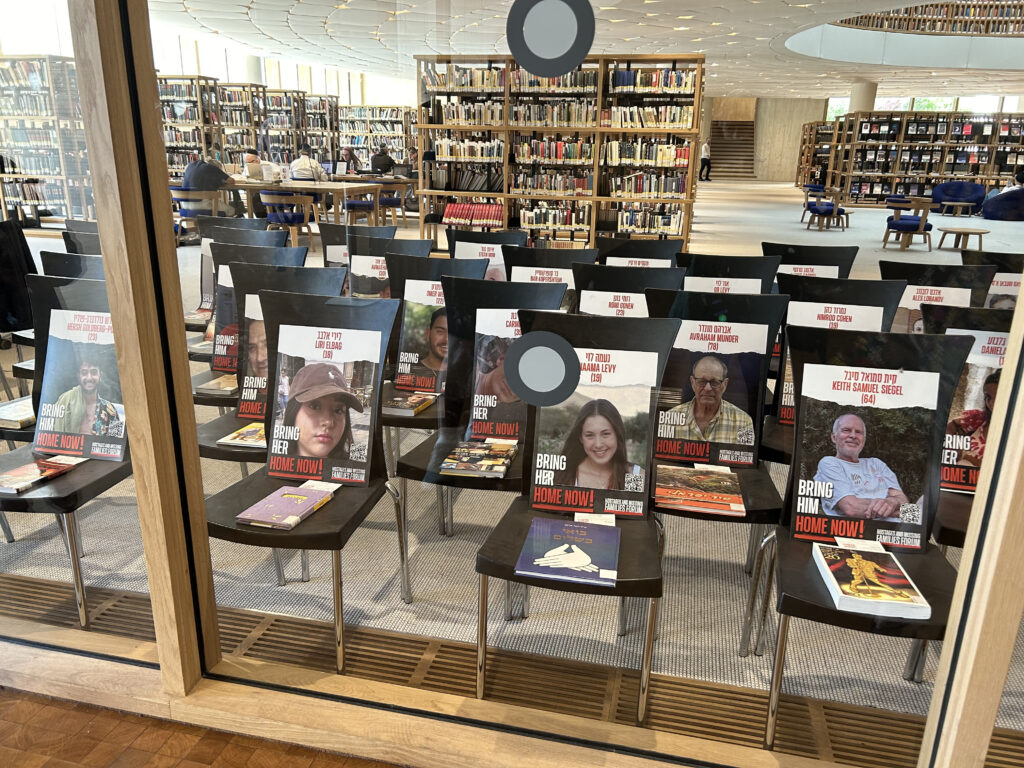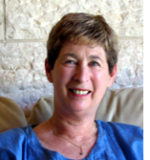
By Dorothea Shefer-Vanson

MEVASSERET ZION, Israel — I jumped on the opportunity to take another guided tour of the splendid new National Library building in Jerusalem (this time under the auspices of IAWE, the Israel Association of Writers in English).
The 20 or so assorted individuals who gathered in the café (dubbed Harry’s Café, but no one told us who Harry was) were summoned to the gathering point, equipped with audio apparatuses and set off on our tour.
Our guide was at pains to give us information about the establishment and history of the Library, which was founded as the B’nai Brith Library in Jerusalem in the early 1920s, but existed even before that, having been thought up and brought into existence by a group of intellectuals in eastern Europe in 1892, when Jews were asked to send books to Jerusalem to serve as a repository of Jewish culture and knowledge.
From 1925, when the Hebrew University was established on Mount Scopus, the library, known then as the Jewish National and University Library, was situated there. This situation continued until 1948, when Mount Scopus, with all its buildings, became part of Jordan. During that time books were occasionally smuggled out of the old library building into the new one, situated at the apex of the new Givat Ram campus of the Hebrew University, at the point where the buildings housing the Humanities and the Sciences met.
After 1967, when Mount Scopus was once again in Israel’s hands, the Hebrew University reclaimed its buildings on the mountain-top campus, although leaving the Sciences departments on the Givat Ram campus.
Early on in the development of the State of Israel the government designated the area of Jerusalem known as Givat Ram as the site where government buildings, the Knesset, the Hebrew University and several museums would be situated. In 2008 the project to construct a new home for the National Library (now no longer part of the Hebrew University) was launched, and Swiss architects Herzog and de Meuron were chosen to design the building, which was inaugurated in October 2023, albeit with less fanfare than originally intended due to the Hamas attacks of 7th October that year.
Since the role of the Library is to preserve the collective memory of the Jewish people and the State of Israel, it has taken upon itself to gather, document and preserve any and all material related to that horrific event and the subsequent war. The project is called ‘Bearing Witness,’ and employs several people in the unit set up in order to collect and document the material in its various shapes and forms. It is a collaborative national and global effort aimed at documenting October 7th and its aftermath, both in Israel and in Jewish communities around the world.
Our group sat in stupefied silence as we were given the facts and figures delineating the many thousands of filmed, written and photographic items of evidence of that dreadful event. I personally was torn between being full of admiration for the effort and feeling sickened by the detached way in which we were presented with the cold numbers regarding pieces of evidence. Thus was our collective trauma transmuted into impersonal facts and figures. But then one of our group pointed out that at the time of the Holocaust there were those, whether friend or foe, who amassed documentary evidence at the time, and how valuable all that is today.
The scope of the material is immense and unprecedented, providing a national memory database and enabling evidence-based historical research. The objective is to preserve these materials and make them available and accessible today and for future generations. It is a mammoth task, but one that is both unenviable and invaluable.
*
Dorothea Shefer-Vanson is an author and freelance writer based in the Jerusalem suburb of Mevasseret Zion, Israel.